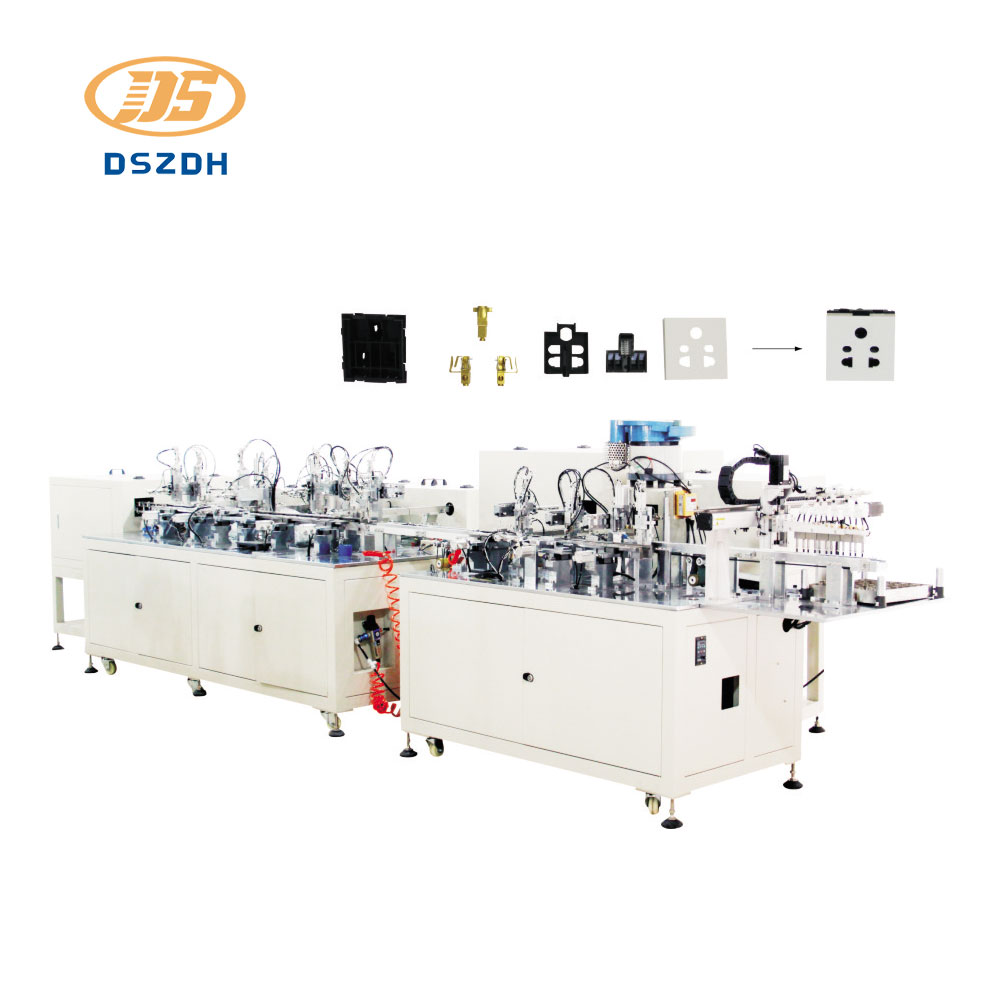Sustaining Excellence: Ensuring Efficiency and Productivity of Three Hole Socket Automatic Assembly Machines Over Time
2024-04-03
In the competitive landscape of manufacturing, efficiency and productivity are the cornerstones of success. Three Hole Socket Automatic Assembly Machines have emerged as indispensable tools for achieving these goals, offering unparalleled speed, accuracy, and reliability. However, ensuring the long-term efficiency and productivity of these machines requires proactive maintenance, continuous optimization, and strategic planning. Let's delve into how manufacturers sustain excellence in the operation of Three Hole Socket Automatic Assembly Machines over time.
1. Routine Maintenance and Servicing:
- Manufacturers establish routine maintenance schedules to ensure the optimal performance of Three Hole Socket Automatic Assembly Machines. Regular inspections, lubrication, and calibration of components are essential to prevent wear and tear and address potential issues before they escalate. Scheduled servicing by qualified technicians helps maintain the integrity of the machine and prolong its lifespan.
2. Predictive Maintenance Techniques:
- Predictive maintenance techniques, such as condition monitoring and predictive analytics, play a crucial role in ensuring the efficiency and productivity of Three Hole Socket Automatic Assembly Machines over time. Sensors and monitoring systems continuously track machine health indicators, such as temperature, vibration, and lubrication levels, to predict potential equipment failures. By addressing maintenance needs proactively, manufacturers minimize unplanned downtime and maximize uptime.
3. Continuous Optimization and Upgrades:
- Manufacturers continually optimize the performance of Three Hole Socket Automatic Assembly Machines through software updates, hardware upgrades, and process improvements. Advanced algorithms and machine learning techniques enable machines to adapt to changing production requirements and optimize their operations over time. Upgrading components, such as sensors, actuators, and controllers, ensures that machines remain at the forefront of technological advancements and maintain peak performance.
4. Operator Training and Skill Development:
- Well-trained operators are essential for maximizing the efficiency and productivity of Three Hole Socket Automatic Assembly Machines. Manufacturers provide comprehensive training programs and technical support services to ensure operators have the knowledge and skills required to operate and maintain the machines effectively. Continuous skill development initiatives empower operators to troubleshoot issues, optimize settings, and maximize throughput, contributing to overall efficiency.
5. Data-Driven Decision-Making:
- Manufacturers leverage data analytics and machine learning algorithms to make informed decisions about the operation and maintenance of Three Hole Socket Automatic Assembly Machines. Real-time performance data, production metrics, and predictive analytics insights enable manufacturers to identify areas for improvement, optimize workflows, and implement proactive maintenance strategies. Data-driven decision-making drives continuous improvement and ensures the long-term efficiency of the machines.
6. Collaboration with Suppliers and Partners:
- Manufacturers collaborate closely with suppliers, partners, and industry experts to stay abreast of technological advancements and best practices in Three Hole Socket Automatic Assembly Machine operations. By fostering partnerships with leading suppliers and engaging in knowledge-sharing initiatives, manufacturers gain access to cutting-edge technologies, innovative solutions, and industry insights that enhance the efficiency and productivity of their assembly operations.
7. Regular Performance Reviews and Audits:
- Manufacturers conduct regular performance reviews and audits of Three Hole Socket Automatic Assembly Machines to evaluate their effectiveness and identify opportunities for optimization. Key performance indicators (KPIs), such as throughput, cycle time, and defect rate, are monitored closely to assess machine performance against established benchmarks. Performance reviews provide valuable insights into areas for improvement and guide strategic decision-making to maintain efficiency and productivity over time.
In conclusion, sustaining excellence in the operation of Three Hole Socket Automatic Assembly Machines over time requires a holistic approach that encompasses routine maintenance, predictive maintenance techniques, continuous optimization, operator training, data-driven decision-making, collaboration with suppliers, and regular performance reviews. By adopting proactive maintenance strategies, leveraging advanced technologies, and fostering a culture of continuous improvement, manufacturers can ensure that their assembly operations remain efficient, productive, and competitive in the ever-evolving manufacturing landscape.



